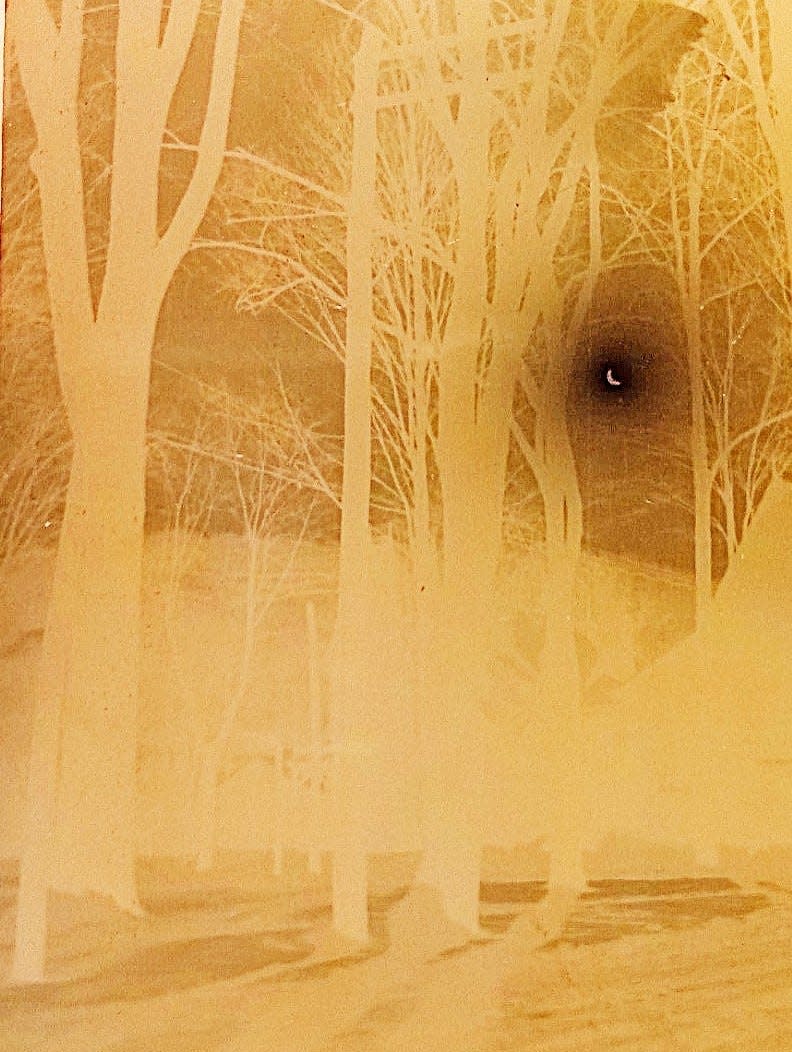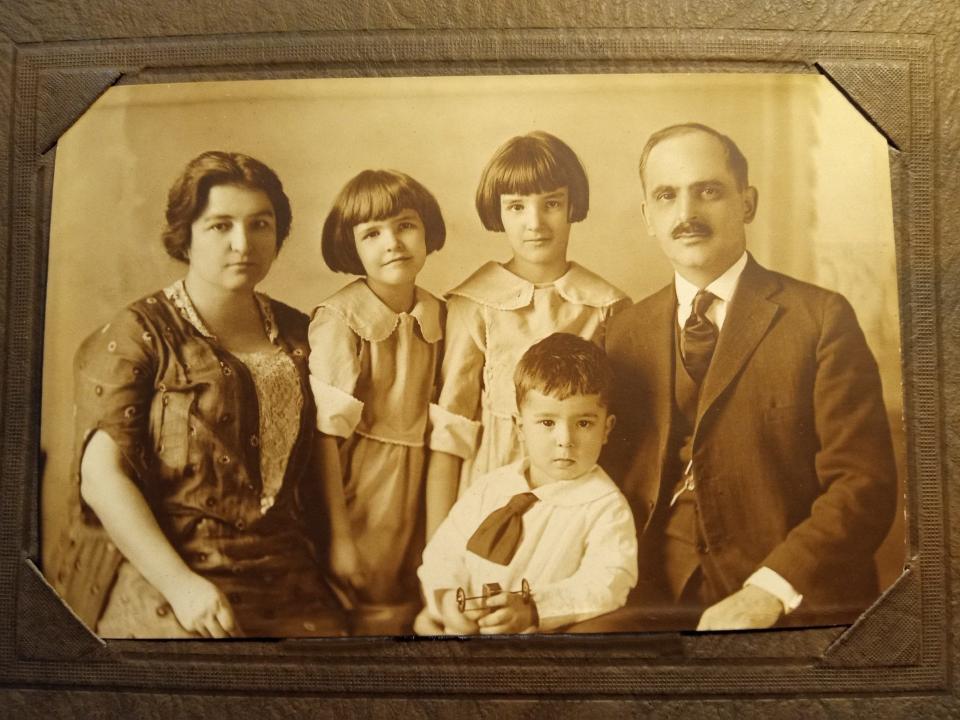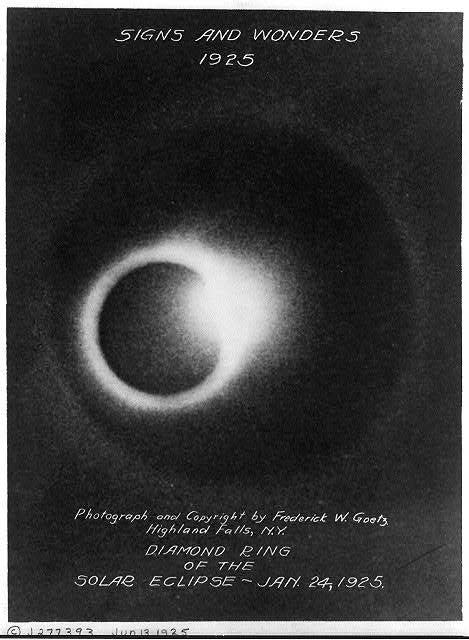Local history: Honesdale saw total solar eclipse in 1925
The last time a total solar eclipse passed through anywhere in northeastern Pennsylvania was 99 years ago, on Saturday morning, Jan. 24, 1925. This included all of Lackawanna and Wayne counties, and most of Pike.
Millions saw it, including my late mother from Honesdale, who was 10. She remembered it all her life. This story recalls her report as well as impressions preserved in the local newspapers.
Using proper eye protection, the partial eclipse coming on Monday afternoon, April 8 will be spectacular, with nearly 95% of the sun briefly covered. The nearest point to Wayne County where the eclipse will be total is near Syracuse, New York. If the weather forecast is favorable, undoubtedly many northeast Pennsylvanians will be heading that way.
Back in the Roaring 1920s from the northern Poconos there was no need to travel. The sky was clear, and one only had to step outside or even peer from a window to witness the fantastic sight of the black moon covering the sun, the glow of the solar corona all around it and the brightest stars and planets appearing.
The moon's shadow crossed over the Great Lakes area and west-central New York before entering Pennsylvania. From there, it crossed northern New Jersey, the Catskills and lower Hudson Valley, greater New York City, Connecticut and Rhode Island.
My mother lived with her family at 914 Church St., across from the park in Honesdale. It was an extremely cold morning. After breakfast, they bundled up, went onto the sidewalk, and looked southeast toward the rising sun.
Her mother, Eva W. Garratt, kept a diary and entered the following for Jan. 24, 1925:
"At 9:10, total eclipse of the sun. We all looked at it with camera films. Very inspiring, though Grandma washed dishes through it all! Did not see light streamers and colors as those on the hills. Was 20 degrees when it occurred. Elsa taking music lessons at Mable Broad."
(She likely meant "-20 degrees" as other local sources state the mercury was well below 0 degrees Fahrenheit.)
Along with Elsa and her parents were her younger siblings, Ruth and David. Their father, Chester A. Garratt, was serving as district attorney. He was fascinated with the natural world.
My grandmother Eva took a picture of the eclipse with her box camera loaded with 620 film.

Eva’s picture shows an overexposed partially eclipsed sun, soon before totality. It was captured over Grace Episcopal church and between trees in Central Park.
A popular but risky method back then to view the eclipse was through several stacked layers of overexposed camera film. More common, but also no longer considered safe, was to blacken a piece of glass with candle or lantern soot.
Elsa's grandmother Selina Ham Garratt lived with them and either thought it was just too cold out or was apprehensive or disinterested. Ever mindful of household chores, she stayed in the kitchen cleaning their breakfast dishes while the daylight through the windows temporarily became deep twilight. The kitchen windows did not face the right direction to see the rising sun.
My mother told me that as darkness fell, roosters started crowing. Back then it was not unusual to have poultry in town. Already frigid, it became much colder with the sun gone, she said. She reported seeing bright stars or planets.
The family of at least one of her schoolmates, she later learned, was convinced the world was ending.

Like at any eclipse, some would not likely see it owing to being confined. Wayne County Memorial Hospital, located next to the courthouse, had opened only five years earlier and probably had a few patients.
We do know the Wayne County jail, the old stone lockup, had at least one guest. A news report stated that a man from Prompton was arrested the day before and incarcerated for running an illegal, 500-gallon corn mash still.
From Honesdale, totality began at 9:09 a.m. and lasted one minute and 46 seconds.
Honesdale's two newspapers reported on the following.
The Wayne County Citizen stated: "The morning dawned bright and clear and cold with a temperature of about 12 degrees below zero in Honesdale. The sun came up with startling brilliance, but shortly before eight o'clock began to lose its full power by the encroachment of the moon... As the shadow gradually increased the brilliance of the winter morning faded until shortly before nine o'clock a twilight of peculiar hue spread over the land.
"Residents of Honesdale ceased their working and hurried to points of advantage to witness the sight of the century; Irving Cliff and neighboring hills were lined with spectators who braved the zero temperature...
"Shortly after nine o'clock the sun was blotted out and for a few minutes the darkness of a moonlight night prevailed over the country. Stars made their appearance in numbers and street and auto lights cast their brilliance throughout the town. The luster and beauty of the flaming rays, spreading out from the unseen sun, brought exclamations of wonderment and appreciation from practically the entire population.
"House tops, windows, streets and every point of advantage were occupied by spellbound watchers of the marvelous spectacle. In a flash of light, the sun again made its appearance, and the darkness was all over. Business resumed its natural course..."
The Wayne Independent reported the temperature as 14 below, pinching the nose and stinging the feet of anyone not careful.
The eclipse became sermon material the next morning. At Grace Episcopal Church, Honesdale, Rev. G. B. Walter preached on "The Heavens Declare the Glory of God..." The sermon, printed verbatim in The Citizen, asserted that the eclipse provided a powerful message to a congregation of millions, understood by anyone not hindered by pride.
The Independent reported, "It is said that there were a few in Honesdale who became extremely excited insomuch as they had not even heard of the eclipse and when the shadows began to lengthen and the partial darkness began to appear they thought the end of the world had come," adding that most were completely prepared by the information in the newspapers, on bulletin boards and other ways.
Honesdale's power company turned on the streetlamps, but the Independent said they were not needed.
"All over the eastern part of the nation observations were made by all classes and kinds of folks and an opportunity to see this exhibit in the heavens will not return for another century to this locality," the Independent added.

Residents of other local communities were also enthralled by the event. In Milford, crowds thought a high vantage point would help, hiking to the Knob overlooking the borough, or on Foster Hill, the Dispatch reported. At Mill Rift, Erie locomotives sent up "effective smoke screens" allowing the public to see the partial eclipse phase before it reached totality.
At totality in Scranton, traffic came to a stop and trolleys halted as everyone looked up. Miners came out of the mines into daylight only to experience totality's twilight. Boys exited the breakers. Factory and mill workers paused to witness the wonder. The Tribune writer said all were struck by the awesomeness of it all and how small it made them feel.
The chance to see a total solar eclipse in any location on Earth is exceedingly rare. Sky and Telescope reported that the average time between two total solar eclipses is 375 years.
The next total solar eclipse to be seen locally includes all of eastern Pennsylvania and eastward. This is in 55 years, during the early morning of Monday, May 1, 2079, data calculated by Fred Espenak from NASA shows. From Honesdale, totality begins 40 seconds after sunrise (6:07 a.m.) and lasts a minute and 35 seconds.
Note: Observing the sun through smoked glass, sunglasses, or overexposed camera film, although once common, are not adequate to protect the eyes. Specially made solar filters, safely used, or indirect means such as projecting an image of the sun through a pinhole in cardboard or through a telescope onto a white screen are completely safe. For more information on the upcoming eclipse and safe viewing tips, see timeanddate.com/eclipse/solar/2024-april-8 or science.nasa.gov/eclipses/future-eclipses/eclipse-2024/where-when/.
Peter Becker has worked at the Tri-County Independent or its predecessor publications since 1994. Reach him at pbecker@tricountyindependent.com or 570-253-3055 ext. 1588.
This article originally appeared on Tri-County Independent: Last total solar eclipse in northern Poconos was in 1925

